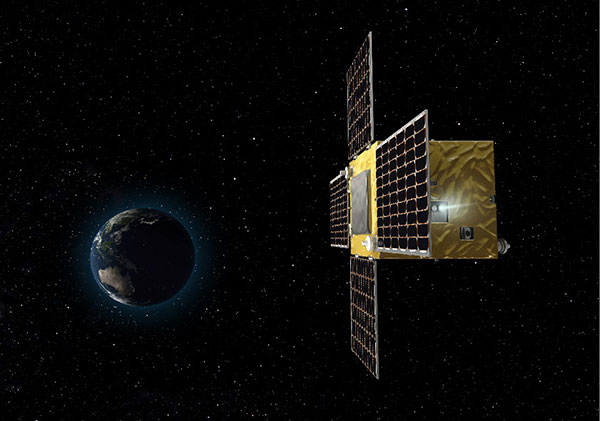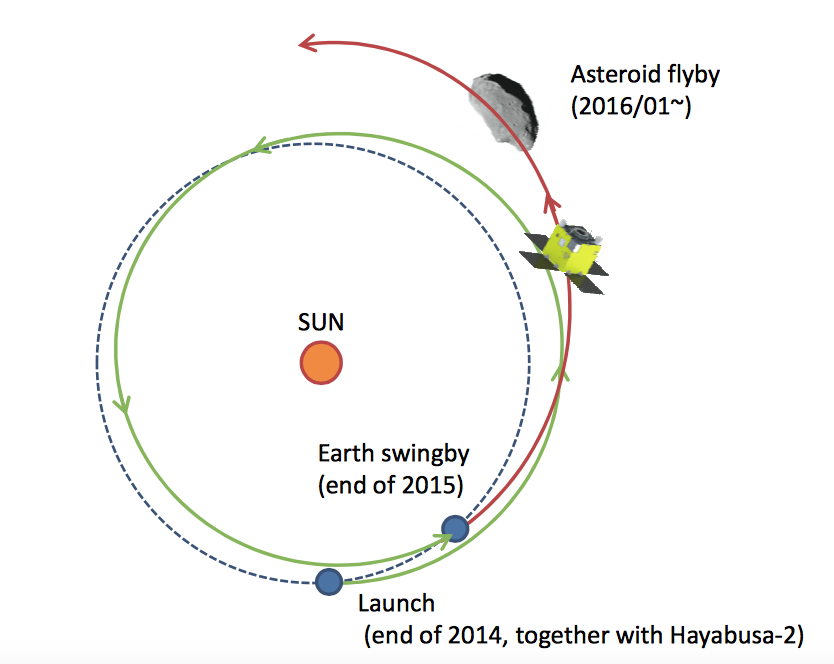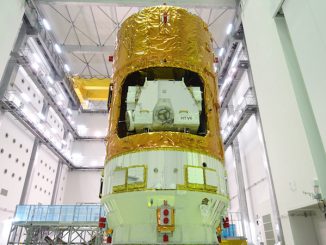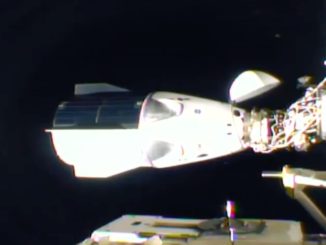
An experimental suitcase-sized space probe launched as a secondary payload with Japan’s Hayabusa 2 mission in December will miss an encounter with an asteroid early next year, according to Japanese scientists.
The Procyon spacecraft blasted off Dec. 3, 2014, with the Hayabusa 2 asteroid sample return mission, which aims to collect rock specimens from a carbon-rich asteroid and return them to Earth in 2020.
Scientists at the University of Tokyo and the Japan Aerospace Exploration Agency designed the 143-pound (65-kilogram) Procyon spacecraft to fly by a different target than Hayabusa 2’s destination, demonstrating that a compact probe can return valuable data millions of miles away from Earth.
Officials blamed a problem with the Procyon probe’s ion propulsion system, which stopped working in mid-March, according to a report published by the Mainichi Shimbun, a major Japanese newspaper.
Shaped like a cube roughly 2 feet (60 centimeters) across, Procyon targeted a flyby of asteroid 2000 DP107, an object spanning a half-mile (800 meters) across with its own smaller moon.
But the mission ran into trouble, and ground controllers raced against a deadline to recover the spacecraft’s ion engine before the end of April, when Procyon needed to adjust its trajectory to reach the asteroid 120 million miles from Earth next year.
The deep space maneuver with the ion propulsion system was intended to send the spacecraft back toward Earth for a gravity assist in December. Earth’s gravity would then slingshot the probe toward its target in May 2016.

The Mainichi Shimbun reported metallic dust is adhered to the inside of the engine, which may also have a short circuit. Attempts to remove the dust by spinning the spacecraft were unsuccessful, according to the news report.
The newspaper said the University of Tokyo and JAXA developed the Procyon mission for 500 million yen — about $4.1 million.
The mission’s objectives were to demonstrate small spacecraft technologies for deep space exploration and collect imagery and other data during an asteroid flyby.
The $240 million (28.9 billion yen) Hayabusa 2 mission is on track to reach its target — asteroid 1999 JU3 — in June 2018 for a year-and-a-half of surveys, mapping and daring touch-and-go descents to pick up rock fragments from the body’s surface. The craft will also drop a quartet of landers to bounce across the asteroid to study the object up close.
Hayabusa 2 will depart the asteroid in December 2019 and return to Earth in December 2020, dropping a canister with samples through the atmosphere for a parachute-assisted landing in Australia.
Email the author.
Follow Stephen Clark on Twitter: @StephenClark1.



